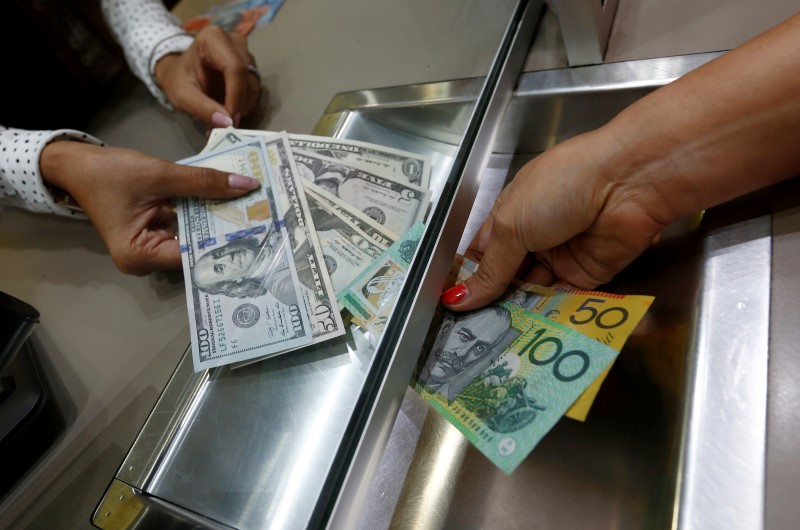Investing.com - The Aussie gained in Asia on Tuesday with building approvals data surprising with a sharp gain with the forex market already noting impressive higher wages in Japan late last year.
USD/JPY changed hands at 113.14, up 0.02%, while AUD/USD rose 0.11% to 0.7852.
Japan reported average cash earnings for November jumped 0.9%, well above the 0.6% expected and overtime pay soared 2.60% compared to a 0.60% rise seen.
In Australia, building approvals data jumped a surprise 11.7%, compared with a 1.3% decline seen on month for November.
The U.S. dollar index, which measures the greenback’s strength against a trade-weighted basket of six major currencies, was last quoted up 0.36% to 92.08.
Overnight, the dollar rose against a basket of major currencies Monday ahead of Fed speakers as traders continued to expect the Federal Reserve to maintain its rate hike path this year despite Friday’s weak jobs report.
The dollar attempted to pare recent losses as recent comments from a fed official reinforced investor expectation that the US central bank would hike rates at least three times in 2018 despite Friday’s jobs report showing the U.S. economy created fewer-than-estimated jobs in December.
San Francisco Fed President John Williams Fed Williams, an FOMC voter, said recently three rates remained appropriate for 2018 amid expectations that President Donald Trump’s tax reform plans would give the economy a boost.
Fed Williams comments were said to be somewhat hawkish as he is widely seen as a centrist when it comes to monetary policy. Speeches by Fed Williams, Bostic and Rosengren are expected later in the session Monday.
The sharp uptick in the greenback weighed on euro as the single currency fell 0.49% to $1.1970 against the dollar as investors appeared to take profit on the euro following its recent rally.
Action Economics said market expectations the Bank of Canada will raise rates by 25-basis-point rate hike next week was supported by recent data showing rising employment as well as wages and a drop in the unemployment rate.
